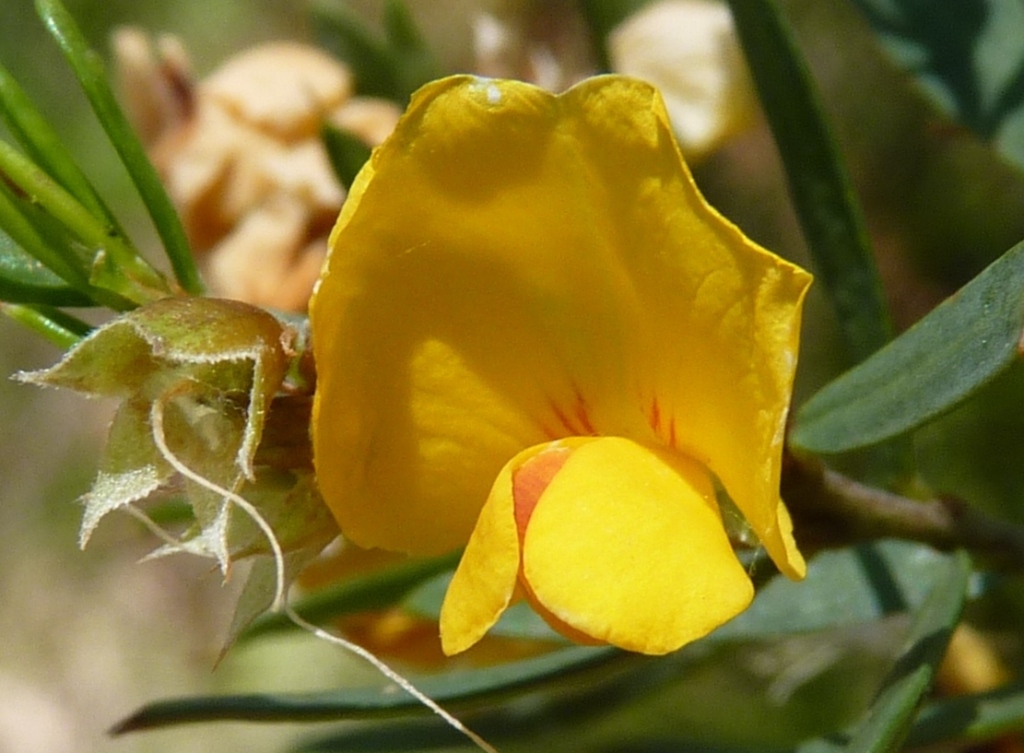Pultenaea forsythiana
BlakelyShrub to 3 m high; stems terete, covered with short, curled hairs. Leaves alternate, linear to narrowly elliptic, 10–26 mm long, 1–3 mm wide, usually widest at or above middle, flat or concave, tapered gradually to petiole, glabrous; apex pungent; upper surface paler than lower; margin flat or incurved; stipules 2–3 mm long with slender, recurved tips. Flowers axillary, clustered towards tips of short lateral shoots; enlarged stipules of floral leaves grading to apparent bracts c. 2 mm long, usually trifid at tip with hirsute midrib extending to form a narrow central lobe, lateral lobes glabrous with ciliate margins; calyx 3.5–4.5 mm long, usually glabrous except for finely ciliate margins of lobes; bracteoles inserted at base of calyx tube, lanceolate 1–3 mm long with distinct, variably hairy midrib; standard 10–12 mm wide; ovary and lower half of style hairy. Pod turgid, at least lower third enclosed by calyx. Flowers Oct.–Jan.
Wim, GleP, VVP, VRiv, GipP, OtP, WaP, CVU, GGr, NIS, EGL, EGU, WPro, HSF, HNF, OtR, Strz, MonT, HFE, VAlp. Also NSW. Widespread in moist forest, often on heavier volcanic soils on mountain slopes.
Rare west of Melbourne aside from the Otways. Occurrences in forest in the Kentbruck area, west of Portland, where it was first observed near a gravel pit in 1967, may have been the result of accidental introduction.
Pultenaea forsythiana is not always recognised, with most other Australian states treating it as a synonym of P. juniperina due to the presence of intermediate forms in Tasmania (de Kok & West 2003). However, in Victoria there are two clearly distinct entities. Plants from the Grampians and Gembrook (treated here as P. juniperina) have distinctly incurved leaves that are widest at the base and often cordate, and more or less concolourous. Whereas the more widespread form in eastern and south-western Victoria (treated here as P. forsythiana) has leaves that are flat or concave with slightly incurved margins, that are linear or widest towards the tip, and usually turn dark purple on the undersurface (at least on drying).
Corrick, M.G. (1996). Pultenaea. In: Walsh, N.G.; Entwisle, T.J., Flora of Victoria Vol. 3, Dicotyledons Winteraceae to Myrtaceae, pp. 765–793. Inkata Press, Melbourne.
 Spinning
SpinningKok, R.P.J. de; West, J.G. (2003). A revision of the genus Pultenaea (Fabaceae). 2. Eastern Australian species with velutinous ovaries and incurved leaves. Australian Systematic Botany 16: 229–273.

